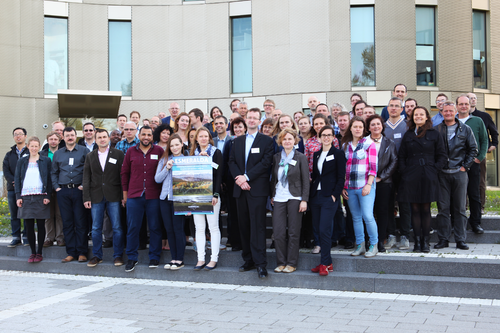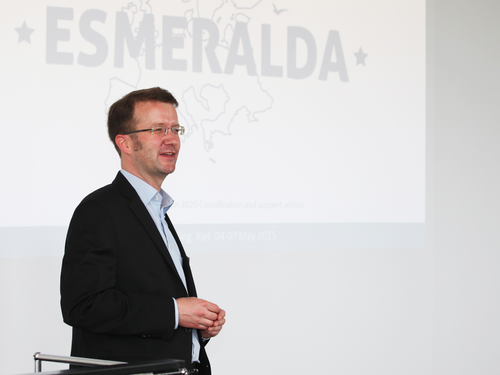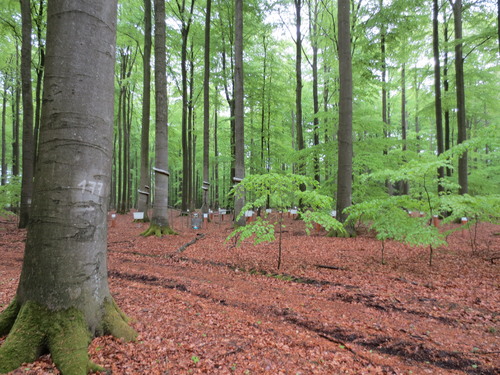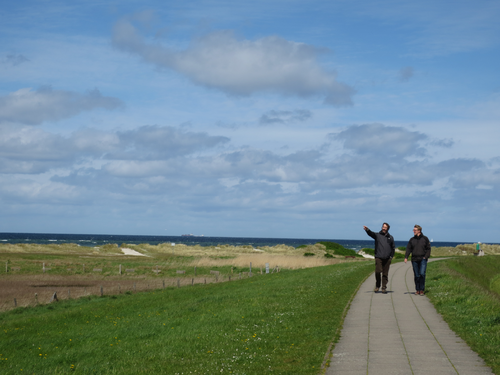News
SYKE is looking to employ a person on a one-year contract, fixed-term employment contract for the poition of researher in the Helsinki office.
The task is to carry out research on green infrastructure and ecosystem services as part of land use planning, to execute related GIS analysis and to participate in method development especially to support sustainable land use planning, and to participate in writing funding applications.
To be successful in the tasks, the applicant should have a suitable university degree, deep and versatile command of geoinformatics (geoinformatics or geography as a main subject), basic knowledge of natural sciences, several years' working experience of related tasks, good spoken and written knowledge of Finnish and English, as well as good collaborative, interaction and communication skills. Doctoral degree is an advantage.
Further information can be requested from Head of Unit Riikka Paloniemi, tel. +358 295 251 493 and Senior Researcher Leena Kopperoinen, tel. +358 295 251 296.
Applications including a CV (based on the template of the Finnish Advisory Board on Research Integrity http://www.tenk.fi/en/template-researchers-curriculum-vitae) and a list of publications should be sent by using the web service: www.valtiolle.fi by Monday 8 June 2015 at 15.15 (CET) at the latest.
Find out more information in the position offer attached below.
A new report "Mapping and Assessment of Ecosystems and their Services: Trends in ecosystems and ecosystem services in the European Union between 2000 and 2010" is now availavle via the EC Joint Research Centre.
Abstract:
This report presents an analysis of the trends in the spatial extent of ecosystems and in the supply and use of ecosystem services at the European scale between 2000 and 2010. In the EU urban land and forests increased while cropland, grassland and heathland decreased. Other ecosystem types underwent smaller changes. The main trends in provisioning, regulating and maintenance, and cultural ecosystem services were assessed using a set of 30 indicators assorted according to the CICES classification. More crops for food, feed and energy were produced in the EU on less arable land. More organic food was grown. Textile crop production and the total number of grazing livestock decreased. Water use relative to water availability remained stable. Timber removals increased but so, too, did the total timber stock. There was an increase in net ecosystem productivity (growing biomass). Several regulating services, but in particular those which are related to the presence of trees, woodland or forests, increased slightly. This was the case for water retention, forest carbon potential, erosion control, and air quality regulation. Pollination potential and habitat quality showed a negative trend. There was a positive trend in the opportunity for citizens to have access to land with a high recreation potential.
A new research featured in the latest issue of Science for Environment Policy (SEP) suggests that simple characteristics of plant species — such as height or leaf size — can be used to predict the ecosystem services provided by the green roofs they grow on. The researchers suggest that their method could be used to screen the thousands of potential plant species in order to optimize green roof design.
Green roofs on buildings are able to provide multiple ‘ecosystem services’ such as the reduction of heat loss from buildings in winter, the retention of stormwater and the provision of habitats. However, the delivery of such services may be dependent on the characteristics of the plant species grown on them.
For this study, the researchers investigated whether simple traits of plant species can be used to indicate the different ecosystem services that they might provide if they were part of a green roof. They measured four traits of 21 plant species in their natural habitats: plant height, the average leaf area and leaf weight of each species and the ‘specific leaf area’, which is the leaf’s area divided by its weight. The team then ran experiments with the 21 plant species grown separately in trays across a single green roof between 2007–2011.
Throughout the experiment the researchers recorded four properties of the green roof ecosystem: the density of the plant growth, the rate at which species covered the tray, the amount of sunlight reflected by the green roof and the accumulation of snow on the roof during winter (as this affects the temperature of the soil). The researchers could then relate the four simple measurements taken from the plants in their natural environments to the properties they would show as part of a green roof. For example, they found that taller plants were more likely to cover the roof at a faster rate.
The researchers also examined the ecosystem services provided, which were measured as the amount of stormwater captured, temperature changes in the soil during summer and winter, and changes to soil composition e.g. the amount of nitrate removed. In a final step the researchers used the four plant traits to predict ecosystem service provision. For example, leaf size could indicate the density of plant growth which would subsequently influence the temperature regulation provided by the green roof.
Read the full brief here.
Original source:
Lundholm, J., Tran, S. & Gebert, L. (2015). Plant functional traits predict green roof ecosystem services. Environmental Science and Technology 49 (4): 2366- 2374. DOI: 10.1021/es505426z
BiodivERsA3 has officially launched its 2015 pan-European joint call for research proposals. The call, co-funded by the European Commission, will focus on understanding and managing the biodiversity dynamics to improve ecosystem services and functioning.
BiodivERsA is a network of 29 research-funding agencies across 18 European countries. It is an ERA-NEt Co-fund, funded under the EU’s Horizon 2020 Framework Programme for Research and Innovation. BiodivERsA works to coordinate national research programmes on biodiversity across Europe and to organize international funding for research projects in this field.
The complete announcement on this call, including details on the topics, is listed here.
Scientific teams are invited to form international consortia comprising research groups from at least three countries participating in the BiodivERsA call. The complete list of participating countries can be found here.
The deadline for submission of pre-proposals (mandatory) is set on Monday 20 July 2015, 17:00 GMT +1:00. More information on the time schedule can be found here.
Humankind benefits in multitude ways from biodiversity, ecosystems and the services they provide. Such services include for example the provisioning of drinking water, food security, air quality regulation or recreation.

Esmeralda group photo; Credit: Christian Urban, Uni Kiel
The new collaborative EU Horizon 2020 funded project "ESMERALDA - Enhancing ecosystem services mapping for policy and decision making" looks into the needs of policy and decision-makers in EU member states for flexible methodologies, tools and data for sustainable management of ecosystems and their services.
The project held its official kick-off meeting from 5 to 7 May 2015 at Kiel University (CAU), Germany. Around 70 representatives, including scientists, experts and stakeholders of 25 partner organisations from 20 European countries met for the start of the three and a half year coordination and support action.
The ESMERALDA project is planned to serve as an important basis for implementing the European Commission's Biodiversity Strategy 2020, adopted in 2011, which aims to prevent the loss of biological diversity, and to improve the state of European species, living areas, ecosystems and ecosystem services.
The project will create flexible methodologies to provide the building blocks for pan-European and regional assessments of ecosystems and their services as an essential part for informed decision making and a core of the EU Biodiversity Strategy.
"The data collected during ESMERALDA will assist the European states involved towards reaching the goals of the EU Biodiversity Strategy, step by step," said the project coordinator, Dr Benjamin Burkhard, of the Institute for Natural Resource Conservation at Kiel University.
"This first meeting puts the initial building blocks into a three-and-a-half-year joint research initiative that will provide important milestones for a more sustainable future of our ecosystems and the services they provide to humankind.
The EU H2020 funded ESMERALDA project kick-off meeting took place between 5 - 7 May 2015 at the University of Kiel, Germany. Around 70 representatives, including scientists, experts and stakeholders of 25 partner organisations from 20 European countries met for the start of the three and a half year coordination and support action

Project co-ordinator opening the kick-off meeting ; Credit: Christian Urban, Uni Kiel
The 3 day meeting presented an opportunity for partners to meet and discuss future plans for teh successful development of the project.
The meeting ended with an excursion to monitor ecosystem services around Kiel.


EMSERALDA Excursion: Credit: Linda Scholten
 SYKE Researcher position offer
SYKE Researcher position offer
